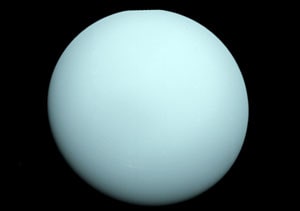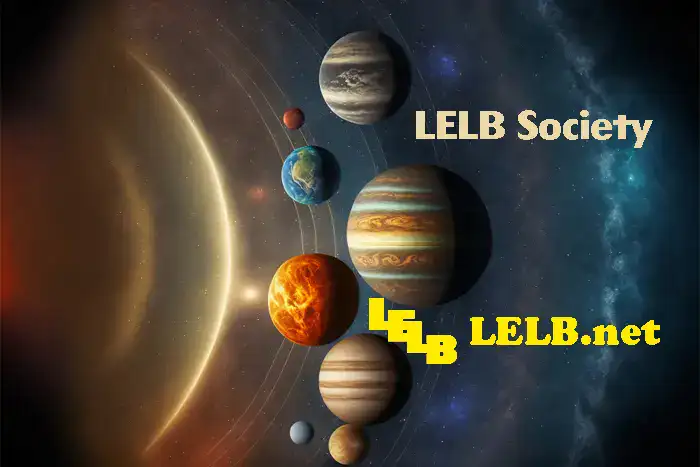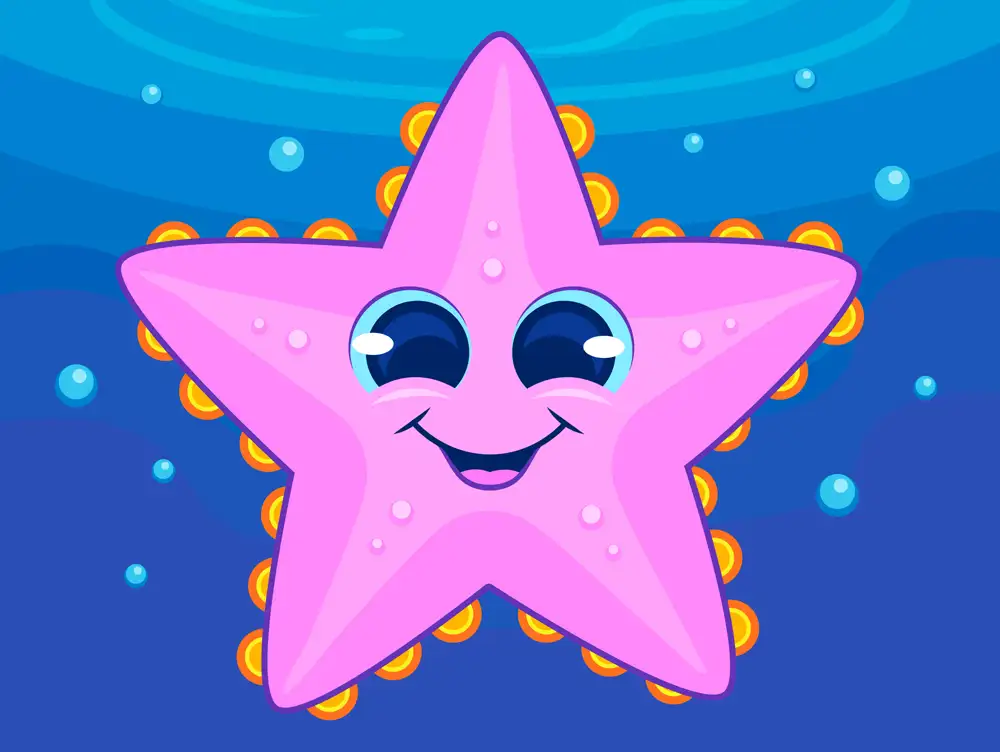English Documentary on Uranus with Transcript, embedded flashcards and video podcast to improve your listening and reading comprehension and expand your vocabulary
Source of documentary: National Geographic YouTube Channel
A new neighbor waiting to be discovered
In ancient times, humans studied the night sky and discovered the worlds of Mercury, Venus, Mars, Jupiter and Saturn. But beyond this realm of knowledge, another world shines brightly, just waiting to be discovered.
Uranus is the seventh planet from the Sun. From a distance of about 20 astronomical units or 20 times the distance between Earth and the Sun, Uranus orbits the star once every 84 earth years; approximately the length of a human’s entire life.
Owning a different climate
This orbit causes each season of Uranus to last that much longer. Theoretically, a human living on Uranus would experience the four seasons only once but each for about 21 years. Partially due to its distance from the Sun, Uranus boasts the coldest temperatures in the solar system. These icy temperatures dropping as low as negative 370 degrees Fahrenheit are largely influenced by the planet’s composition.
Composing elements
At about 4 Earths wide, Uranus has an Earth-sized core made of iron and magnesium silicate. The remainder, approximately 80% of Uranus, is a worldwide ocean of ices made of water, ammonia and methane, the chemical behind the planet’s cool blue color. This icy composition prevents Uranus from emitting much heat compared to other planets, making the blue world the solar system’s coldest.
Movement and geographical coordinates
In addition to its extreme temperatures and orbit, Uranus has a dramatic orientation. While the other seven planets spin on their axes like tops, Uranus appears to roll along its equator. The planet is tilted at a near right angle in which polar regions point toward and away from the Sun rather than upward and downward.
This tilt, thought to be the result of Uranus’s collision with at least one celestial body, has also affected the orientation of Uranus’s 13 rings and 27 known moons. Unlike the rings and moons of other worlds which orbit their home planets horizontally, those of Uranus orbit in a vertical orientation along the planet’s tilted equator, much like a Ferris wheel.
A Greek name for the new world
Uranus and its many unusual features were a mystery to the ancients, and the planet was actually thought to be a star. But in the late 18th century, astronomer, William Herschel, discovered that the celestial object was actually a new world.
The scientific community debated over what the planet should be called, and eventually chose a name suggested by astronomer Johann Elert Bode. Bode believed that since Jupiter was the father of the gods, and Saturn was the father of Jupiter, then this new planet should be the father of Saturn, Caelus.
But rather than following the tradition of using names from ancient Roman religion Bode instead opted for Caelus’s ancient Greek equivalent, Ouranos. Ouranos, the ancient Greek god of the heavens, was then Latinized to be Uranus.
To this day, Uranus is still the only planet that veered from tradition with an ancient Greek namesake, a status most fitting for a planet beyond convention.




I think both the far distance of uranus from the Sun and the unique composition of Uranus which prevent heat emission from the Uranus made it very cold.
That’s completely correct. Although we have another planet farther than Uranus, i.e. Neptune, Uranus is the coldest planet in the entire solar system.
approximately 80% of Uranus, is a worldwide ocean of ices made of water and This icy composition prevents Uranus from emitting much heat compared to other planets, making the blue world the solar system’s coldest.
That’s absolutely correct. Thank you so much. In other words, the heat at the center of Uranus is trapped inside and cannot reach for the surface or icy crust.
Hello Dr.Hariri. I have a question. In the phrase ( spin on their axes like tops ) what do axes and tops mean?
Hi Armaghan. Yes, sure. Anytime.
Axes is the plural of axis, which means the imaginary and vertical line that goes through a planet, here Uranus, and the planet spins around it.
‘spin on their axes like tops’ means that in other planets the axes are on tops (on top of each pole of the planet, i.e. the maximum north and south part of the planet). This is not true about Uranus, and the axes are in the east and west sides of the planet.
Please explain why Uranus is the coldest celestial body in the entire solar system?
80% of Uranus, is a worldwide ocean of ices made of water. Its icy composition prevents Uranus from emitting much heat compared to other planets, and causing it to be the solar system’s coldest planet.
That’s exactly correct. Thank you so much.
A Planet Which Has 27 Moons, URANUS
In ancient time, human studied the night sky and discovered the world of mercury, Venus , Mars, Jupiter and Saturn. But beyond the beyond the realm of knowledge, another world shined brightly; just waiting to be discovered.
Uranus is the seventh planet from the sun. From a distance about 20 astronomical units or 20 time the distance between the earth and the sun. Uranus orbits the star once about 84 Earth years , approximately the length of a human’s entire life, this orbit causes each seasons of Uranus to last that much longer .Theoretically, a human living on Uranus would experience the four seasons only once but each for about 21 years. Partially due to it’s distance from the Sun Uranus boasts coldest temperature in the solar system. This icy temperature, dropping as low as negative 370 degree Fahrenheit , are largely influenced by the planets composition.
As about fourth Earth’s wide, Uranus has an Earth-sized core made of iron and magnesium silicate. The remainder approximately 80% of Uranus, is a worldwide ocean of ices made of water, ammonia and methane. The chemical behind the planet’s cool blue color. The icy composition prevents Uranus from emitting much heat compare to other planets, making the blue world, the solar system’s coldest. In addition to its extreme temperatures and orbit. Uranus has a dramatic orientation. While the other seven planets spin on their axes like tops, Uranus appear to roll along it’s equator. The planet is tilted at a near right angle, in which polar regions point toward and away from the Sun, rather than the upward and downward. This tilt, thought to be the result of Uranu’s collision with at least one celestial body, has also affected the orientation of Uranus’s 13 rings and 27 known moons. Unlike the rings and moons of the other worlds, which orbit their home planets horizontally, those of Uranus’s orbit in a vertical orientation along the planet’s tilted equator, much like a Ferry’s wheel.
Uranus and its many unusual features were a mystery to the ancients, and the planets was actually thought to be star. But in the late 18th century, astronomer William Herschel discovered that the celestial object; was a actually a new world. The scientific community debated over what the planet should be called, and eventually chose a name suggested by astronomer Johann Elert Bode. Bode believe that since the Jupiter was the father of the gods, and Saturn was the father of Jupiter, then the new planet should be the father of Saturn, Caelus. But rather than following the tradition of using name from Roman religion, Bode instead opted for Caelus, ancient Greek equivalent, Ouranos. Oranos, the ancient Greek god of the heavens, was then Latinized to be Uranus.
To this day, Uranus is still the only planet that veered from tradition with an ancient Greek namesake, a status most fitting for a planet beyond convention.
You’ve made a big mistake. This transcription task has been completed by Nastaran. I asked you to consider and review it just as an example or pattern.
This is your authorship page:
https://lelb.net/author/bidushroy/
And as you can see, you were supposed to transcribe a video on Tsunamis:
https://lelb.net/english-documentary-on-tsunamis-with-transcript/
See the latest comments here:
https://lelb.net/comments/
Give us your feedback here:
https://lelb.net/feedback/
Contact us if you have any question:
https://lelb.net/contact/
All through commenting!
A new neighbor waiting to be discovered
In ancient times, humans studied the night sky and discovered the worlds of Mercury, Venus, Mars, Jupiter and Saturn. But beyond this realm of knowledge another world shine brightly, just waiting to be discovered. Uranus is the seventh planet from the Sun, from a distance of about 20 astronomical units or 20 times the distance between Earth and the Sun.
Owning a different climate
Uranus orbits the star once every 84 earth years. Approximately the length of a human’s entire life. This orbit causes each season of Uranus to last that much longer. Theoretically a human living on Uranus would experience the 4 seasons only once but each for about 21 years. Partially due to its distance from the Sun, Uranus boasts the coldest temperatures in the solar system. These icy temperatures dropping as low as negative 370 degrees Fahrenheit are largely influenced by the planet’s composition.
Composing elements
At about 4 Earths wide, Uranus has an Earth sized core made of iron and magnesium silicate. The remainder approximately 80% of Uranus is a worldwide ocean of ices made of water, ammonia and methane, the chemical behind the planet’s cool blue color. This icy composition prevents Uranus from emitting much heat compared to other planets making the blue world the Solar system’s coldest.
Movement and geographical coordinates
In addition to its extreme temperatures and orbit, Uranus has a dramatic orientation while the other seven planets spin on their axes like tops Uranus appears to roll along its equator. The planet is tilted at a near right angel in which polar regions point toward and away from the Sun rather than upward and downward. This tilt thought to be the result of Uranus’s collision with at least one celestial body, has also affected the orientation of Uranus’s 13 rings and 27 known moons. Unlike the rings and moons of other worlds which orbit their home planets horizontally, those of Uranus orbit in a vertical orientation along the planet’s tilted equator, much like a Ferris wheel.
A Greek name for the new world
Uranus and its many unusual features were a mystery to the ancients, and the planet was actually thought to be a star. But in the late 18th century astronomer William Herschel discovered that the celestial object was actually a new world. The scientific community debated over what the planet should be called, and eventually chose a name suggested by astronomer Johann Elert Bode. Bode believed that since Jupiter was the father of the gods, and Saturn was the father of Jupiter, then this new planet should be the father of Saturn, Caelus. But rather than following the tradition of using names from ancient Roman religion Bode instead opted for Caelus’s ancient Greek equivalent, Ouranos. Ouranus the ancient Greek god of the heavens, was then latinized to be Uranus. To this day, Uranus is still the only planet that veered from tradition with an ancient Greek namesake, a status most fitting for a planet beyond convention.
Thank you for your transcription. Here comes my feedback:
earth-sized
orientation while the –> orientation. While …
angel –> angle
Ouranos, the antient Greek god of heavens
Latinized